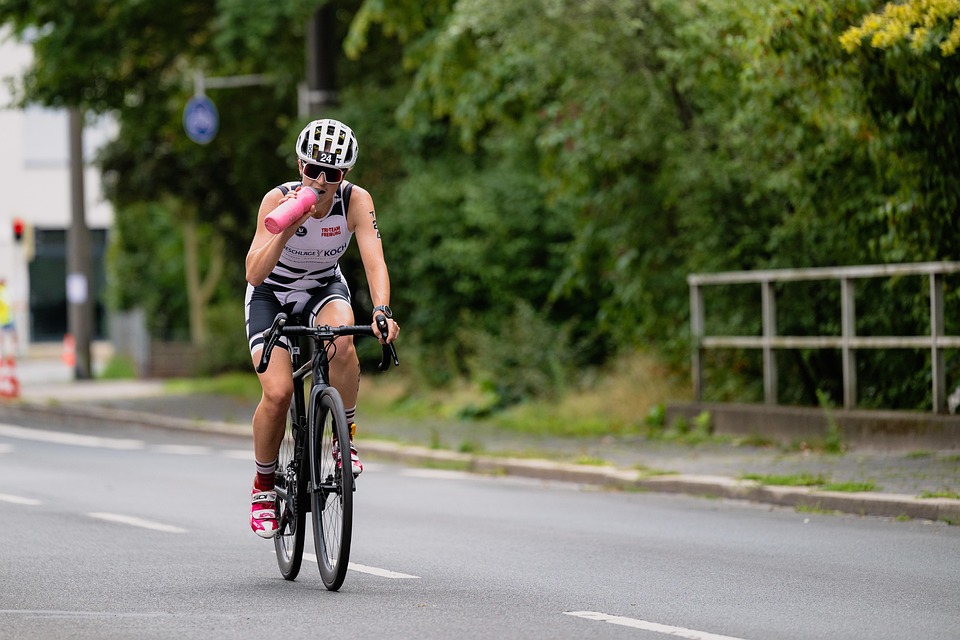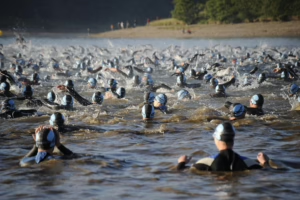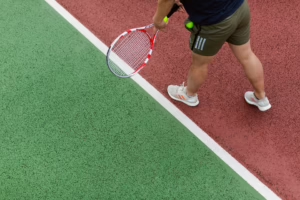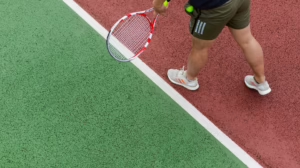Harnessing the Mind-Body Connection through Acrobatic Arts
Introduction
Acrobatic arts encompass a myriad of disciplines that combine physical prowess, artistry, and acumen. From gymnastics to contemporary circus, acrobatics demands not only strength and flexibility but also mental focus and emotional stability. This intricate interplay between the mind and body serves as the foundation for success in acrobatic endeavors. Harnessing this mind-body connection is crucial, not only for performing complex movements but also for fostering mental well-being and resilience.
In this article, we will explore how acrobatic arts can be an effective medium for enhancing the mind-body connection, benefiting both physical and mental health. We will examine techniques, practices, and principles that underscore this synergy, while discussing how these can be applied across various aspects of life. Notably, acrobatics is not just a form of performance art; it transcends into an essential practice for personal development and mental fortitude.
Historical Context of Acrobatic Arts
Acrobatics has a rich history that dates back thousands of years. Early forms of acrobatics can be traced to ancient civilizations, where performers would execute daring feats in circuses, festivals, and athletic competitions. The Greeks and Romans incorporated acrobatic elements in their theatrical performances and athletic training, recognizing the benefits of physical fitness and mental discipline.
The development of modern acrobatics can be linked to the evolution of circus arts in the 19th and 20th centuries. More recently, with the advent of contemporary circus, disciplines such as aerial silks, parkour, and pole dancing have emerged, focusing on artistry and personal expression. The evolution of these arts is not only a testament to human creativity but also a reflection of our understanding of the mind-body connection in training disciplines.
Understanding the Mind-Body Connection
Definition and Importance
The mind-body connection refers to the intricate relationship between mental processes and physical functions. It encompasses the idea that one’s mental state can significantly impact physical health, and vice versa. Stress, for example, can lead to physical ailments, while physical activity can bolster mental health by releasing endorphins and enhancing mood.
Scientific studies have shown that engaging in activities that foster the mind-body connection can result in numerous benefits, such as improved cognitive function, reduced anxiety, enhanced emotional resilience, and an overall better quality of life. Practices such as yoga, meditation, and martial arts have long been recognized for their ability to cultivate this connection, and acrobatic arts are no exception.
Psychological and Physiological Benefits
Engagement in acrobatic arts can lead to a variety of psychological and physiological advantages:
-
Improved Focus and Concentration: Acrobatics requires rigorous discipline and steadfast attention. By mastering the skills involved, practitioners learn to hone their concentration, allowing them to tackle challenges with greater clarity and resolve.
-
Enhanced Self-confidence: The progressive nature of acrobatic training—with its emphasis on setting, pursuing, and achieving goals—helps build self confidence. As individuals master difficult techniques, they gain not just physical strength, but a marked increase in self-esteem.
-
Stress Relief: Physical activity is known to reduce stress levels, and acrobatics is no exception. The focus required during practice enables individuals to momentarily set aside distractions and anxieties, fostering a sense of presence.
-
Increased Flexibility and Strength: From a physiological perspective, the diverse and dynamic movements in acrobatics promote flexibility, strength, and coordination. Improved physical health is closely linked to enhanced mental health.
- Social Connections: Training in acrobatic arts often occurs in a communal setting. This social aspect provides a support network for emotional expression and relief, promoting a sense of belonging and acceptance.
Techniques for Harnessing the Mind-Body Connection
Mindfulness in Training
Mindfulness—being present in the moment—is an essential component of harnessing the mind-body connection in acrobatics. Being mindful during practice allows performers to fully engage with their movements, resulting in heightened skill acquisition and improved performance.
Implementation: Incorporate a few minutes of mindfulness breathing exercises before beginning acrobatic training. This helps clear distractions and focuses the mind on the task ahead. Visualizing movements can further enhance this process, allowing practitioners to mentally rehearse their routines.
Visualization Techniques
Visualization is a powerful tool used by many athletes, including acrobats. By mentally picturing themselves performing a sequence successfully, acrobats can enhance their performance and build confidence.
Implementation: After learning a new skill, take time to sit quietly and visualize each movement in detail. Focus on how it feels to execute the movements as well as envisioning successful outcomes.
Setting Intentions
Intentionality can significantly change how acrobatic arts are approached. Setting clear intentions for each training session fosters purpose and direction.
Implementation: At the beginning of each session, celebrate small achievements from previous practices and set goals for what to achieve during the current session. This encourages a positive mindset.
Cross-Training with Complementary Arts
Engaging in complementary physical practices, such as yoga or dance, allows for enhanced flexibility, balance, and strength—all of which are pivotal in acrobatic arts. These practices can also support mental clarity and emotional expressiveness.
Implementation: Incorporate yoga and dance classes into the regular training schedule, focusing on synchronized breathing and physicality.
Real-life Applications of Mind-Body Integration
Performance Preparation
The mind-body connection takes center stage in performance settings. The anxiety of performing in front of an audience can often become debilitating. Understanding how to harness focus and movement can aid in transforming this anxiety into excitement.
Strategies:
-
Pre-Performance Rituals: Develop calming pre-performance rituals involving breathing exercises and affirmations to serve as confidence boosters.
-
Grounding Techniques: Utilize grounding techniques that focus on physicality and away from negative thoughts. This can be as simple as focusing on feet on the ground or gentle movements to calm the senses.
- Emotional Expression: Use the performance as an outlet for emotional expression, transforming nerves into passion. Understanding that performing is an act of sharing can be empowering.
Everyday Life
The principles learned through acrobatic arts can extend beyond the practice space. Harnessing the mind-body connection allows individuals to engage with life more fully, manage stress more effectively, and approach challenges with greater resilience.
-
Coping with Stress: Implement acrobatic approaches to solving everyday challenges. Physical activity through acrobatics can mitigate stress and enhance mental clarity in decision-making.
-
Social Skills: The collaborative nature of acrobatic arts helps develop essential social skills, enabling individuals to communicate effectively and build connections.
- Goal Orientation: The habit of setting and achieving goals in training can be adopted in various areas of life, allowing for a more purposeful approach to personal and professional endeavors.
Training the Mind-Body Connection
Collaborative Learning Environments
Participation in classes and workshops fosters community and learning, tapping into both personal and collaborative experiences of acrobatics. The social environment enables shared learning and emotional support, enhancing not only physical skills but the mind-body connection.
Implementation: Encourage group settings for practice, providing peer feedback and collective motivation.
Balancing Strength and Grace
Acrobatics embodies a balance between strength and grace, both of which are essential components of the mind-body connection. Developing an awareness of this balance aids in both performance and life.
Implementation: Engage in exercises that emphasize the fluidity and strength of movements, integrating strength training with gracefulness in practice.
Consistency and Patience
Developing the mind-body connection is not an overnight process. Consistent practice, self-compassion, and patience are critical for cultivating growth.
Implementation: Establish a regular training schedule that incorporates various elements of acrobatics and mental practices. Be kind to oneself in the learning journey.
Challenges and Barriers
While there are notable benefits to harnessing the mind-body connection through acrobatic arts, various challenges can arise. Understanding these obstacles can aid in navigating them more effectively.
Fear of Injury
The fear of injury can hinder individuals from fully engaging with acrobatics. This fear can create mental barriers that interfere with performance.
Strategies:
-
Progressive Training: Emphasize gradual skill development to cultivate confidence and reduce fear.
- Awareness of Limits: Foster an understanding of personal limits, recognizing that injury prevention starts with self-awareness.
Performance Anxiety
Performance anxiety is common among acrobats and can be debilitating. Developing coping mechanisms is essential for managing this anxiety.
Strategies:
-
Mindfulness and Breathing: Regularly practicing mindfulness can diminish anxiety. Deep breathing techniques prior to performing can also aid in calming nerves.
- Positive Self-talk: Implementing positive affirmations helps counter negative thoughts that lead to anxiety.
Self-Comparison
In a field often rooted in visual performance, self-comparison can be a significant barrier.
Strategies:
-
Focus on Personal Growth: Cultivating a mindset focused on personal growth and progression allows individuals to reduce comparison and foster self-acceptance.
- Cultivating Gratitude: Regularly acknowledging what one has achieved creates a more positive outlook and increases self-esteem.
Conclusion
Harnessing the mind-body connection through acrobatic arts provides a powerful avenue for personal growth, mental stability, and physical health. Through mindful practices, training techniques, and interpersonal connections, individuals can cultivate a holistic understanding of their bodies and minds.
As acrobatic arts evolve, so too does our understanding of the profound impact of the mind-body connection on well-being. This intricate relationship serves not just the performer but the broader scope of human experience, enabling individuals to navigate life’s challenges with grace and resilience.
Ultimately, the pursuit of acrobatic arts transcends mere performance; it is an integrative practice that empowers individuals to lead healthier, more balanced lives. By committing to this journey, practitioners unlock the transformative potential that lies within the synergy of mind and body.
References
-
Smith, J. (2020). The Mind-Body Connection in Sport: An Overview. Journal of Sports Psychology, 34(2), 115-127.
-
Lee, T., & Chen, A. (2021). How Acrobatics Enhance Self-Esteem and Mental Resilience. International Journal of Health and Physical Education, 12(3), 210-225.
-
Thompson, R. (2019). Mindfulness Practices for Athletes: Techniques for Reducing Performance Anxiety. Sports Psychology Review, 42(4), 303-316.
-
Johnson, D., & White, E. (2022). The Benefits of Cross-Training: Enhancing Acrobatics through Complementary Practices. Fitness Studies Quarterly, 18(1), 45-59.
- Carter, L. (2021). The Role of Visualization in Performance Enhancement for Acrobats. Journal of Athletic Coaching, 29(2), 150-165.
This article offers a detailed exploration of the mind-body connection through acrobatic arts, emphasizing both physical and psychological benefits. It captures practical techniques and their applications in real life, promoting a holistic approach to personal development. If you need any adjustments or additions, feel free to ask!


























Add Comment